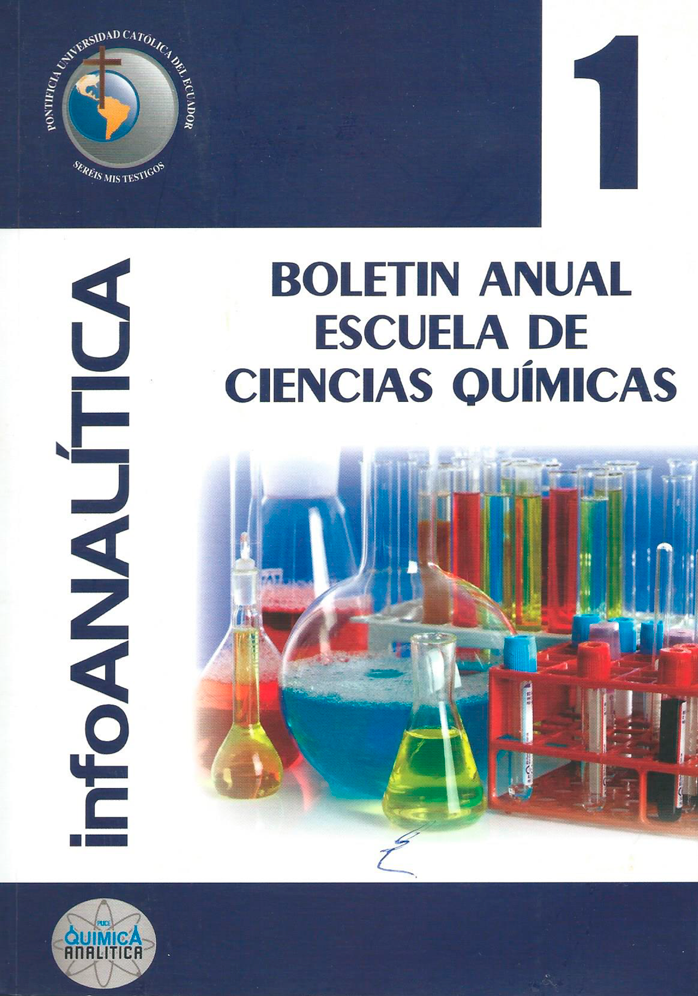Extracción y caracterización de l-carnitina en aguacate (Persea americana) mediante técnicas instrumentales y computacionales
Contenido principal del artículo
Resumen
El objetivo del presente estudio fue la extracción y caracterización de l-carnitina en aguacate (Persea americana) a través de técnicas instrumentales y computacionales. la cuantificación de l-carnitina de dos variedades de aguacate (booth 8 y fuerte) se realizó mediante espectrofotometría uv/vis. se encontró que la variedad booth 8 tiene un contenido de 84 μg de l carnitina/gramo de fruto fresco, mientras que la fuerte, 82 μg/g. además, se determinó la cinética de reacción de acetilación de la l-carnitina por medio de espectrofotometría de infrarrojos. como resultado se obtuvo una reacción de segundo orden global con una constante de velocidad de 4.45x10 l/mol·s a 298±2K. Por último, se realizó el análisis termodinámico de la reacción, se determinó el mecanismo de reacción y el análisis de reactividad y selectividad de las moléculas reactantes mediante técnicas computacionales, con el método b3lYP y el conjunto de bases 6 311g (d,p). la entalpía de reacción fue de –8.2 kcal/mol en fase gaseosa y de –4.1 kcal/mol en fase acuosa. se estableció que la reacción de acetilación se produce por un ataque nucleofílico del hidrocloruro de l-carnitina al cloruro de acetilo, pasa por la formación de un estado de transición tetraédrico y culmina con la eliminación de ácido clorhídrico. se determinó que la l carnitina es una molécula nucleofílica con el oxígeno como sitio activo, mientras que el cloruro de acetilo es el electrófilo y su sitio activo es el carbono carbonílico.
Descargas
Detalles del artículo
- Los autores se comprometen a respetar la información académica de otros autores, y a ceder los derechos de autor a la Revista infoANALÍTICA, para que el artículo pueda ser editado, publicado y distribuido.
- El contenido de los artículos científicos y de las publicaciones que aparecen en la revista es responsabilidad exclusiva de sus autores. La distribución de los artículos publicados en la Revista infoANALÍTICA se realiza bajo una licencia Creative Commons Reconocimiento-CompartirIgual 4.0 Internacional License.
Citas
Brendel, K. & Bressler, R. (1967). The resolution of (±)carnitine and the synthesis of acylcarnitines. biochimica et biophysica acta, 137, 98- 106.
Brown, D., Revision notes Part 10. Summary of organic reaction mechanisms. A mechanistic introduction to organic chemistry and explanations of different types of organic reactions, http://www.docbrown.info/page06/orgMechs3.ht m#esterification, 28 de agosto de 2011.
Calabrese, F. (1992). El Aguacate. Madrid, España.
Carey, f. & Sundberg, R. (2007). Advanced Organic Chemistry: Structure and mechanisms. (5a.ed.). New York, USA.
Demarquoy, J., Georges, B., Rigault, C., Royer, M.C., Clairet, A., Soty, M., Lekounoungou, S. & Le Borgne, F. (2004). Radioisotopic determination of l-carnitine content in foods commonly eaten in western countries. Food Chemistry, 86, 137-142.
Domingo, L., Aurell, M., Pérez, P. & Contreras, R. (2002). Quantitative characterization of the local Electrophilicity of Organic Molecules. Understanding the regioselectivity on diels alder reactions. Journal of Physical Chemistry, 106 (29), 6871- 6875.
Domingo, L., Chamorro, E. & Pérez, P. (2008). Understanding the reactivity of Captodative Ethylenes in Polar Cycloaddition Reactions. A Theoretical Study. Journal of Organic Chemistry, 73, 4615-4624.
El-Ashry, SM., Aly,. Fa. & El-Brashy, AM. (1994). Studies of complex formation between the bromophenol blue and some important aminoquinoline antimalarials. archives of Pharmaceutical research, 17 (6), 415-419.
Friedman, S. (1958). Determination of carnitine in biological materials. Archives of biochemistry and biophysics, 75, 24-30.
Frisch, M., et al. (2004). Revision d.01, gaussian inc., Wallingford ct, USA.
Gennadii G.E., Kozlov, G.V. & Makitra, R.G. (2006). Theoretical and practical guide to organic physical chemistry. New York. Usa.
Head, K. (2005). l-carnitine monograph. Alternative Medicine Review, 10 (1), 42-50.
Minkler, P.E., ingalls, S.T. & Hoppel C.l. (2005). Strategy for the isolation, derivatization, chromatography separation, and detection of carnitine and acylcarnitine. Analitycal Chemistry, 77 (5), 1448-1457.
Moore, J.W. & Pearson, R.G. (1981). Kinetics and Mechanism. (3a.ed.). New York, USA.
Panter, R.A. & Mudd J.B. (1969). Carnitine Levels in Some Higher Plants. Febs Letters, 5 (3), 169-170.
Parr, R.G., szentpály, l.v. & liu, s. (1999). Electrophilicity index. Journal of the American Chemical Society, 121 (9), 1922 1924.
Pérez, P., Domingo, L.R., Duqe-Noreña, M.R. & Chamorro, E. (2008). a condesed-to-atom nucleophilicity index. An application to the director effects on the electrophilic substitutions. Journal of Molecular Structure: TheochEM, 895, 86-91.
Rosas-García, V.M. (1997). Towards the design of carnitine acyltransferase inhibitors: Modeling the confor- mational behavior of (r)-carnitine, (r)-acetylcarnitine, Morpholinium rings, and 2-oxo-1,3,6-dioxaza- phosphacinium rings, disertación de doctorado en Química, Virginia Polytechnic Institute and State University, USA.
Solomons, G. & Fryhle, C. B. (2008). Organic Chemistry. (9a.ed.). New Jersey, USA.
Strack, E. & Lorenz, i. (1966). zur darstellung von o-acyl-derivaten des carnitins. hoppe-seyler´s zeits- chrift für physiologische chemie, 343, 341-349.
Vaz, f.M. & Wanders, r.J.a. (2002). Carnitine biosynthesis in mammals. Biochemistry Journal, 361, 417- 429.
Whiley, A.W., Schaffer, B., Schaffer, A. & Wolstenholme, N. (2002). The avocado: botany production and uses. Cambridge, Inglaterra.
Ziegler, H.J., Bruckerman, P. & Binon, d.f. (1967). o-acylation of dl-carnitine chloride. Journal of Organic Chemistry, 32 (12), 98 106.

